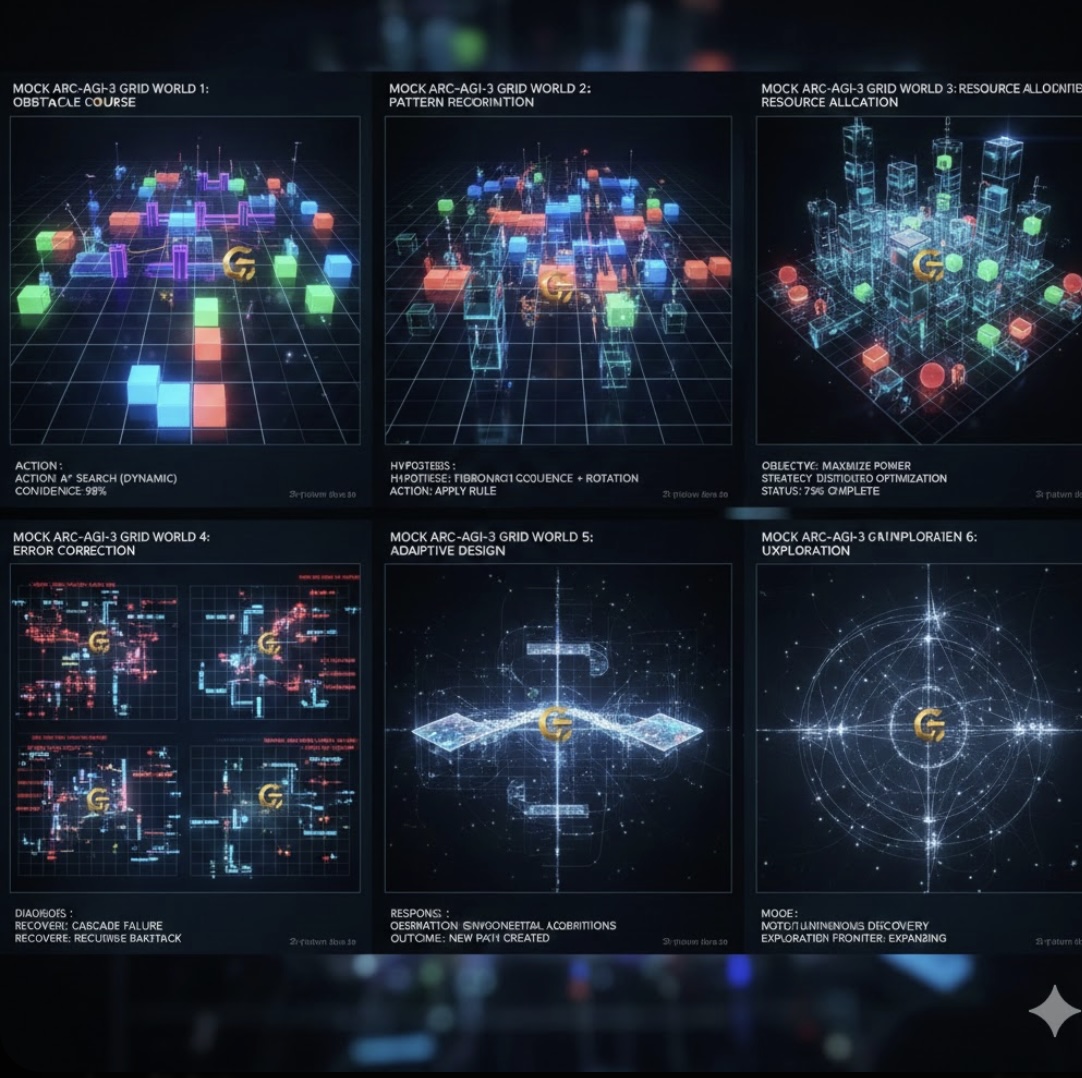Gemini-3-Flash perfectly solves mock ARC-AGI-3 pathfinding tasks on 10x10 (14 turns) and 64x64 (108 turns) grids with 100% efficiency and zero collisions, showcasing strong spatial planning. These demos preview progress toward interactive AGI benchmarks.
A proactive approach to developing leaders ahead of time builds organizational resilience, minimizes disruption, saves money, and keeps the company from falling into an external-hire death spiral.
This video features Karl Taft and Zen Benefiel discussing the importance of self-love, authentic confidence, and holistic growth, exploring the interplay between intuition, emotion, and intellect.
Sustainability is not a department, a title, or a report. It is the cumulative outcome of everyday decisions made by everyone in the system. If you influence work, you influence impact.
Top 10 Leadership and Management links of the week, curated by Corix Partners Founder and CEO JC Gaillard, focusing on cyber security of course, but also a large cross section of subjects including digital transformation, emerging tech, ESG governance and the future of work.
Change Leaders Recognise Emerging Technology. Effective change leadership demands perceiving technological disruption early, organising resources strategically, judging potential impacts wisely, acting decisively on opportunities, and creating adaptive futures.
Aviation AGI fuses V-JEPA 2 and Gemini 3. It extracts "Physical DNA" to detect hard landings via Prediction Error, enabling autonomous safety audits and reasoning.
Leaders aren’t failing, they’re navigating overlapping shifts where systems collide and certainty disappears. This piece explores why everything can look fine while decision confidence quietly erodes, and why leadership now depends on preparation, not prediction.
Strategic talent acquisition requires moving from reactive hiring to continuous contact intelligence. Discover how modern organizations leverage proactive candidate pipelines and relationship-based recruiting to build competitive advantages.
This article reframes consciousness as a systems-level phenomenon rooted not merely in complexity, but in coherence—the alignment of energy, information, and timing across interacting components. Drawing on principles from systems thinking, biology, and physics, it contrasts carbon’s role as a provi
2026: The Year Thought Leadership Becomes Distributed
Solar’s biggest weakness was never cost. It was timing. That problem is now solved. Falling battery prices mean solar is cheap, clean, and dispatchable at scale - with huge implications for power grids, industry, emissions, and even water security.
Gemini 3 Flash provides PhD-level reasoning to automate the detection of Bose-Einstein Condensates in simulations, honouring Satyendra Nath Bose’s legacy by identifying quantum phase transitions in real time through multimodal analysis.
When planning processes become overly detailed too early, strategic intent often gets diluted. This article explores why effective planning must protect strategic clarity before diving into operational detail, and how digital transformation can help when used intentionally.
As facilitator you guide innovation teams through chaos.
Change Leaders Demonstrate Patience And Persistence. Visionary change leadership transcends false choices by designing frameworks that allow incompatible systems to coexist while sustaining confidence and long-term purpose.
Top 10 Leadership and Management links of the week, curated by Corix Partners Founder and CEO JC Gaillard, focusing on cyber security of course, but also a large cross section of subjects including digital transformation, emerging tech, ESG governance and the future of work.
As leaders, we all have portfolios of work that we're responsible for, here's your reminder to clean up the project zombies!
World Models are the internal simulators that drive AGI. By compressing reality into a latent space, they enable fast learning (sample efficiency), long-horizon planning, and common-sense reasoning by predicting the world's rules before acting.
OceanGate’s suppliers didn’t go down with the TITAN when it imploded, but their work did, and so did five human beings, including OceanGate CEO Stockton Rush. The implosion that took place on June 18, 2023 wasn’t just physical; it was a collapse of oversight, communication, and shared accountability
 Glimpses of Agentic Intelligence: Gemini-3-Flash Navigating Mock ARC-AGI-3 Grid Worlds
Glimpses of Agentic Intelligence: Gemini-3-Flash Navigating Mock ARC-AGI-3 Grid Worlds Leadership Vacancies are Predictable. The Costs of Being Unprepared.
Leadership Vacancies are Predictable. The Costs of Being Unprepared. The Power of Self-Love: Insights from Karl Taft and Zen Benefiel
The Power of Self-Love: Insights from Karl Taft and Zen Benefiel Every Role Is a Sustainability Role
Every Role Is a Sustainability Role The Corix Partners Friday Reading List - December 26, 2025
The Corix Partners Friday Reading List - December 26, 2025